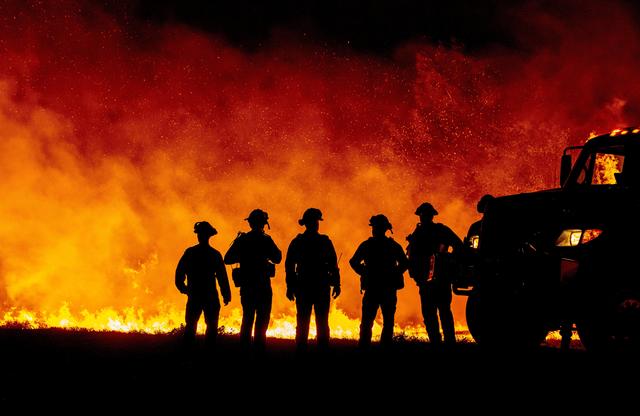The last few years have brought us wildfires galore but 2020 seems to have gone above and beyond what anyone expected.
California Wildfires

According to the California government site, 5 of the top 20 largest wildfires in California history have occurred in 2020. 8,700+ fires have burned well over 4.1 million acres. 31 lives were lost this year across the state of California and nearly ten thousand homes/properties have been obliterated. And that’s in California alone!
Not Just Cali

Other states have also suffered wildfires. Oregon and Washington have been hit hard by the rapidly spreading destruction. And while nothing can be done about the smoke and the apocalyptic scenes people are experiencing, one thing that can be done for future homeowners and developers is to build their homes, schools, and offices/businesses with fire resistant materials instead of wood.
Fire Resistant Homes

One of the most impressive aspects of ICF (insulated concrete forms) is that it resists being consumed by fire. Check out the image above. These three ICF homes in a cul-de-sac are the ONLY survivors of a deadly wildfire in San Diego, as seen by the homes burnt to the ground surrounding them. The outside is protected by a flame resistant foam that doesn’t burn, just melts when heated to very high temperatures. Just beyond that thick foam is a solid wall of concrete, which won’t burn. And on the inside layer, another thick piece of insulating foam material which will help keep the heat outside. Even if the entire building is surrounded by flames, the contents of the structure are protected from the scorching heat. “When you look at an ICF house you can’t tell the difference between it and a stick-built home, but when they withstand a fire people tend to notice,” says Randy Bunnell, president of Amvic Pacific, an Amvic ICF distribution company.
Fire Resistant, Not Fireproof

Even though ICF homes are fire resistant, they aren’t fireproof. Damages may be minimal but if you live in a place susceptible to wildfires and you want to fully protect your new home, make sure you keep your combustible landscaping at least 3 feet away from the house. Build with other fire resistive materials and ensure your home is set far away from a tree line. “Protecting a home, even an ICF home, is about the type of material used in construction, it’s building to current codes and not codes from 10 years ago, it’s having defensible space,” says Bunnell.

The home shown above narrowly avoided damage (see the small charred spot of stucco under that window on the right?) but because the homeowners set up a decent perimeter of defensible space, the house was spared any real damage from a very real fire. Had this home been made of wood, the outcome could have been a complete loss for the family.
If you’re thinking about building a new home, think about the most important part – keeping you, your family, and your possessions safe from harm. Also keep in mind that your home will someday become someone else’s home. Maybe you know them. Maybe you don’t. But shouldn’t we all be thinking ahead to the world we’re leaving for future generations? If everyone starts building with ICF, so many tragedies and losses will be avoided. Choose ICF for you, for yours, and for the future.





